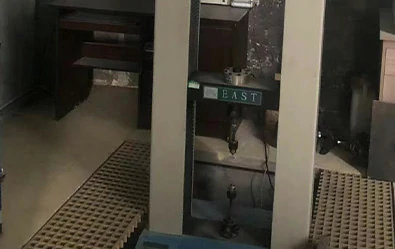loading...
- No. 9, Xingyuan South Street, Dongwaihuan Road, Zaoqiang County, Hengshui, Hebei, China
- admin@zjcomposites.com
- +86 15097380338
- Welcome to visit our website!
Durable and Lightweight Fiberglass Floor Grating Solutions for Various Applications
Understanding Fibreglass Floor Grating A Comprehensive Overview
Fibreglass floor grating, an innovative solution in the realm of industrial and commercial flooring, offers numerous advantages that cater to demanding environments across various industries. This composite material, primarily composed of glass fibers and resin, provides exceptional strength, durability, and corrosion resistance. In this article, we will delve into the features, advantages, applications, and maintenance requirements of fibreglass floor grating.
Features of Fibreglass Floor Grating
Fibreglass floor grating is engineered to withstand challenging conditions while ensuring safety and efficiency. One of its most significant features is its lightweight nature combined with high load-bearing capacity. This allows for easier installation compared to traditional metal grating, reducing labor costs associated with heavy lifting and installation processes. Furthermore, fibreglass grating is designed to be slip-resistant, offering enhanced safety for workers in environments where spills are common, such as chemical plants or food processing facilities.
Another noteworthy feature of fibreglass grating is its resistance to corrosive substances. Unlike metal grating, which can rust and degrade when exposed to harsh chemicals, fibreglass is inherently resistant to corrosion. This makes it ideal for applications in industries such as wastewater treatment, pulp and paper, and marine environments. Additionally, fibreglass grating is available in various designs and colors, providing aesthetic versatility while still meeting performance standards.
Advantages of Using Fibreglass Floor Grating
The benefits of fibreglass floor grating extend beyond its physical properties. One of the primary advantages is its longevity. When installed correctly, fibreglass grating can last for decades without the need for frequent replacement, making it a cost-effective solution in the long run. This durability is complemented by the material's low maintenance requirements; periodic cleaning is typically sufficient to maintain its appearance and functionality.
Another significant advantage is its fire resistance. Fibreglass floor grating typically meets fire safety codes, making it suitable for environments where flammable materials are present. This feature is critical in protecting both human lives and property from fire hazards.
fibreglass floor grating

Moreover, fibreglass grating contributes positively to environmental sustainability. The manufacturing process can have a reduced carbon footprint when compared to traditional materials. Additionally, the longevity and low maintenance of fibreglass grating reduce the need for replacement and repairs, further minimizing its environmental impact.
Applications of Fibreglass Floor Grating
Fibreglass floor grating is utilized in a wide array of applications across multiple sectors. In industrial settings, it is commonly found in chemical processing plants, oil refineries, and waste treatment facilities due to its resistance to corrosive substances and ability to handle heavy loads. In commercial environments, such as shopping malls or airports, fibreglass grating can be employed in walkways, maintenance areas, and platforms where an attractive yet durable flooring solution is required.
Additionally, fibreglass floor grating is an excellent choice for the construction of platforms and walkways within the marine industry. Its resistance to saltwater and marine organisms makes it ideal for boat docks, piers, and other coastal structures. It is also becoming increasingly popular in recreational facilities, providing slip-resistant surfaces for pools and water parks.
Maintenance of Fibreglass Floor Grating
Maintaining fibreglass floor grating is straightforward and does not require specialized knowledge. Regular inspections should be conducted to check for any signs of wear or damage, particularly in high-traffic areas. Cleaning can typically be achieved with a pressure washer and mild detergent, effectively removing dirt, grime, and any residual chemicals. Unlike metal grating, fibreglass does not need to be treated with protective coatings or paints, further simplifying its upkeep.
Conclusion
In summary, fibreglass floor grating stands out as a superior flooring solution for industrial, commercial, and recreational applications. Its unique combination of lightweight strength, corrosion resistance, fire safety, and aesthetic flexibility makes it an increasingly popular choice across various industries. As more companies recognize the benefits of fibreglass grating, it is likely to become a standard for flooring solutions in environments that demand durability and safety. With minimal maintenance requirements and an impressive lifespan, fibreglass floor grating is a wise investment for any facility.
-
The Rise of FRP Profiles: Strong, Lightweight, and Built to LastNewsJul.14,2025
-
SMC Panel Tanks: A Modern Water Storage Solution for All EnvironmentsNewsJul.14,2025
-
GRP Grating: A Modern Solution for Safe and Durable Access SystemsNewsJul.14,2025
-
Galvanized Steel Water Tanks: Durable, Reliable, and Ready for UseNewsJul.14,2025
-
FRP Mini Mesh Grating: The Safer, Smarter Flooring SolutionNewsJul.14,2025
-
Exploring FRP Vessels: Durable Solutions for Modern Fluid HandlingNewsJul.14,2025
-
GRP Structures: The Future of Lightweight, High-Performance EngineeringNewsJun.20,2025
